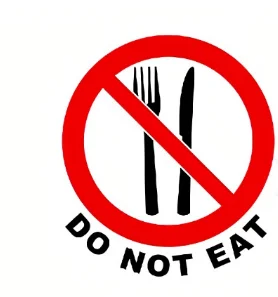The debate around whether or not to eat in the bathtub has been going on for a long time. Many people say that eating in the bathtub is unhygienic and that it could potentially be dangerous. Many states have enacted laws that ban the act of eating in bathtubs.
This blog will look at the main reasons why many people believe that it is a bad idea to eat in the bathtub. Let’s take a look at the science behind this, as well as the story behind what makes this a thing. Is there anything we can learn from this?
Is it illegal to eat an orange in the bathtub?
Generally speaking, eating an orange in the bathtub is not illegal because it does not expressly break any law. While some states may discourage it, there are few or no legal issues regarding eating food or fruits in the bathroom. However, it is not hygienic to do that as it dirties the bathroom may clog the drain.
At the same time, there are reasons why we need to avoid doing that! First, it’s not the most hygienic thing to do.
Not only do you run the risk of slipping and possibly breaking a bone, but you are also more likely to get infections and diseases because fruit is sticky and can hold microbes.

Also, eating in the tub can just be a messy endeavor. It’s much better to eat a snack after getting out of the tub while your skin is still wet.
Rather than eating in the tub, you can read a book, do some light stretches, or take a phone call while you’re in it!
Eating an orange alone is not a crime in some parts of the world as it comes with various health implications.
However, you should not abuse the privilege by risking eating in the wrong place bathtub inclusive. For example, it exposes you to health risks that could cause illness in your body.
States where it is illegal to eat in the bathtub
In several states in America, there are laws prohibiting people from eating in the bathtub. This is either for safety reasons or simply a nuisance for those who live in rented properties. Here is the list of states that have such a law:

- Alabama
- Alaska
- California
- Colorado
- Illinois
- Iowa
- Kansas
- Massachusetts
- Nevada
- New Jersey
- New York
- South Carolina
- Texas
- Wisconsin
Why it is Not Good to Eat Fruits or Food in Bathtubs
1. For Hygiene reasons
Bacteria grow in any place to find a pleasantly warm and humid environment. We all know that bacteria grow much faster in warmer weather than in colder.
So what you are doing by eating food in the shower is that you are providing the bacteria with a much warmer and humid environment than anywhere else in your bathroom.
Such makes it very easy for the bacteria to grow and spread. 20% of all the sick people in the world are ill because of food poisoning. So you are increasing the chance of getting sick by eating food in the shower. Hygiene
Eating food in the bathtub is not only unhygienic and can cause clogged drains but also extremely dangerous.
We have all heard the horror stories of people getting ill from eating in the bathtub. At first, it may seem like a good idea; however, the implication on your health could be severe.
In order to avoid unnecessary complications, eating should never happen in a bathroom. Eating in a bathtub can lead to serious health issues.
Not all bathtubs are clean, making it more challenging to wash off harmful bacteria. Furthermore, water can splash on other surfaces, spreading germs that may lead to illness.
It is not safe for fruits and other foods that contain high water content to be eaten when the fruits and food are still wet.
The wet content in fruits and food can act as a breeding ground for mold, bacteria, or other microorganisms. Eating food harboring these organisms may cause food poisoning.
While you may feel that adding the fun element of food to bath time is an excellent idea, doing so can be incredibly dangerous.
For example, if you decided to add fruit in the bathtub and had a cut or scrape on your finger, this would mean that E. coli could be transferred from your hands, onto the fruit/food, and into your body when you ate it.
2. To Avoid Clogging
Most bathtubs don’t have protective barriers to prevent food from getting into the drain, and if you drop food into the drain, it’s nearly impossible to get it out – that can cause clogs and expensive plumbing bills!
Fruit and veggies are delicious, but it’s better to eat them on plates rather than in the bathtub or shower. Mangos, bananas, celery, and other soapy foods can be slippery and end up in the water because you drop them.
Bathtubs and showers have drains that lead to sewers or septic tanks. And sometimes, fruit and veggies may have chemicals or pesticides on them that could run into waterways through the drain.
3. Separate Eating and Bathing
One should separate eating and bathing. Give each occasion the attention that it deserves. For example, if it is eating time, pick your food and sit in the kitchen or the dining room and eat.

When you use the dining room to eat, you will focus on one thing rather than dealing with several things that require your attention.
Also, the dining room has more convenience for one to eat than any other place in the house.
Bathing is a process that requires removing bodily germs and dirt. This process should not happen where food is around because it can accelerate infections.
For that reason, do it where no food is round and remain safe.
But in most cases, people tend to want to do many things in the bathroom. Some even prefer to read in the bathtubs, which is a common way for those who seek to relax.
4) Dirt in the Bathroom
When you eat in the bathroom, you are likely to drop some of them in the same spot. When they accumulate, they make the place appear messy and dirty. After all, all you need is to have a clean and shiny bathtub that promotes the right mood for your work.
A clean bathtub is critical in keeping away bacteria, pathogens, and other forms of infections. When food particles drop on the bathtub, they become reservoirs for some pathogens that pose a health risk.
5) Pouring
Some risks will be evident when you eat food while in the bathtub. For instance, when you pour soup on the bathroom floor, it becomes slippery, so you may fall while eating in the process.
Since you lack the correct posture to eat, pouring food is possible. A bathtub is dangerous to position yourself well while taking some food.
How to maintain bathtub hygiene
Bathtub hygiene is very important to ensure the cleanliness and hygiene of the bathroom environment. Regular cleaning of your bathtub is necessary to maintain the hygiene of the shower and bathtub.

Sanitary cleaning of the bathtub is essential to prevent the growth of dirt, germs, and other microbes.
Natural cleaning agents are available to maintain the hygiene of your bathtub. The bathtub should be cleaned thoroughly every day.
Bathtub cleaning should happen at least once a week. The bathtub is cleaned by using cleaning solutions and detergents.
It is essential to remove the dirt and stains from the bathtub. This helps to prevent blockage. Such dirt clogs or causes slow draining of your bathtub due to the blockage.
As such, thorough cleaning is important. It would help if you cleaned the bathtub with a brush. Clean the Tub with water only.
A bathtub is generally more accessible to maintain than a shower enclosure, but it does call for the same attention to detail. Like most surfaces, a bathtub needs to be cleaned about once a week to prevent the buildup of mildew and mold.

I love writing about solutions on issues that I face at home and around the community. I love to share creative ideas and valuable reviews of some of the best products to make your home experience better.

